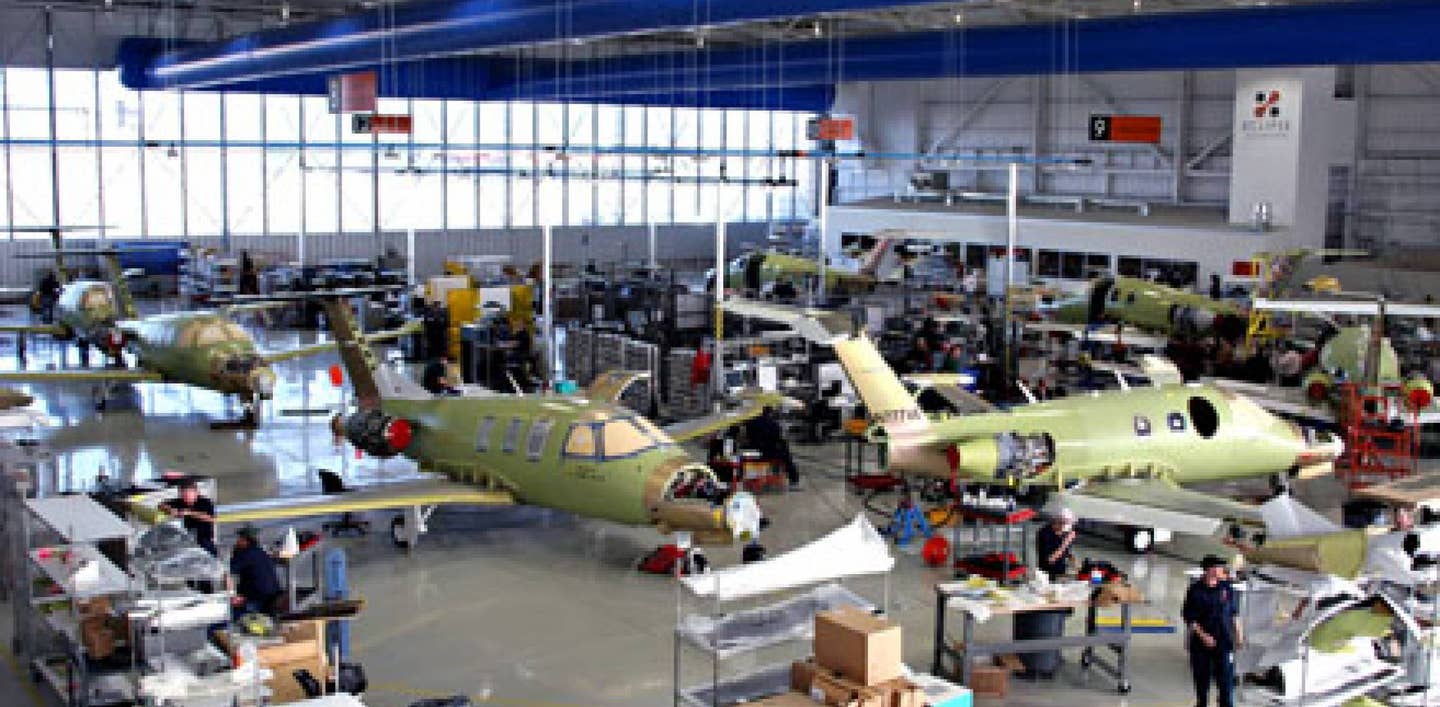Eclipse: Yet Another Resurrection
Wonderful airplane, but the original company died because of a fatally flawed business plan. Good luck shaking that off.

Sometime around 1996, the aviation industry flipped a group-think switch and decided what the world really needed was some very light jets. A whole lot of very light jets. Fast forward and the story leads right through the development last week that the assets of one those companies—Eclipse Aerospace—may sell for the paltry sum of $5.25 million.
When bankruptcy assets are sold, the term “pennies on the dollar” is often used to describe the erosion in value of the original investment or the market value of what’s left. Bankruptcies are often the forerunner to another bankruptcy or, in the case of Mooney, serial fold-ups. But Eclipse took things to a whole ‘nuther level and to put that in perspective, consider this: If you wanted to pick up a new Audi Q5 discounted at the equivalent of the Eclipse fire sale, it would cost you $250—a half cent on the dollar.
We don’t know the details of the sale described in this news story, but presumably, the buyer will get a complete light jet factory or some semblance of the basic capacity to build airplanes. But in aviation, it’s never that simple and resurrections from receivership always require additional capital to prime the pump. And then what’s next? Is there a conceivable sustainable market for the Eclipse version of a little jet? You can always sell some of anything, but the critical mass of profitable volume is quite likely to be larger than the market can absorb.
Just let’s review why Eclipse tanked in the first place. The volume it imagined was an illusion. You may have forgotten that in the frenzy leading up the company opening manufacturing in Albuquerque, New Mexico, buyers were lined up the night before like fanboys hot for the new iPhone. Deposits were coming in via FedEx. A lively secondary market emerged in selling positions for airplanes that didn’t exist and wouldn’t for several years. Eclipse claimed to have as many as 2500 orders and planned to produce 1000 airplanes a year, some 1400 ordered by DayJet, a budding on-demand air taxi idea that also went belly-up for lack of capital and probably a flawed concept.
Eclipse’s bankruptcy and subsequent restart efforts represent the largest business failure in general aviation history. The airplane cost too much to develop, lacked capabilities of near competitors, production was slow and inefficient and the market was just never there to the extent Eclipse thought it was. A billion dollars went down the tubes to produce 260 airplanes, plus another 33 of the follow-on model built by the company that emerged from the original bankruptcy.
In case you don’t recall the folly, as the new century approached, general aviation went a little, well, bat guano crazy about jets. It wasn’t just Eclipse. Everybody had to have a jet. Let’s see, there was the Adam A700, the Comp Air Jet, the ProJet, the Century Jet—an Aerostar with Williams FJ33s—the Vantage Jet and the Safire, to name some that never came to pass. There were also two dodged bullets on the list: Piper and Diamond both suspended their jet projects after realizing how close they ventured to the edge of the abyss.
To be fair, there were successes. Cessna sold almost 500 Mustangs before ending the line. The Phenom 100 is right behind that model and still selling with 369 in the field. After one of the longest gestation periods in modern GA history, Honda’s HA-420 survives as a sexy car company vanity project, but likely not a profitable aviation venture. And don’t forget the Cirrus SF50 Vision, which the company calls a personal jet.
One thing that drove Eclipse’s fantasy business plan was the belief that the airplane could be built cheaply using friction stir welding for the fuselage and that the developing revolution in inexpensive CNC machinery would radically reduce production costs. The original target price for the airplane was $837,000 at a time when every other jet was north of $2 million. The Eclipse 550 follow-on sold for $3 million. In a 2001 interview, then-Eclipse CEO Vern Raburn told me this: “What we’re trying to do is build an airplane that brings the same attributes that people are used to today when they go over to the airline side of the airport and they get on a 737. It’s a jet with high altitude, high speed and the only compromise is the size of the cabin.”
Low purchase price was desirable, he said, but low operating cost was more important. The underlying economic assumptions were so distorted and the production economics so flawed that the concept, if it was valid at all, never got a fair test. Now, the Uber-scenti plan to test it again with fleets of autonomous drones.
There’s a parallel here with Mooney. It’s in a league of its own for bankruptcies, management changes and new owners. If you don’t know anyone who hasn’t run Mooney, you haven’t been around GA much. I asked longtime Mooney dealer Don Maxwell if there’s a business in just supporting Mooneys without building airplanes. He said no. Same answer from Jonny Pollack, who just took over to reorganize the company yet again, with a plan to produce airplanes. But building airplanes is a hellishly good way to lose money. Great steaming stacks of it.
Eclipse has only a fraction of the installed base of 7000 Mooneys, albeit with much higher airframe values. If service-and-support only wouldn’t work for Mooney, why would it work for Eclipse? So the follow-up question is has time and the market just passed by Eclipse? It’s a lovely little jet to fly, but finding enough people to buy new ones—if there can even be new ones—may be a reach.






